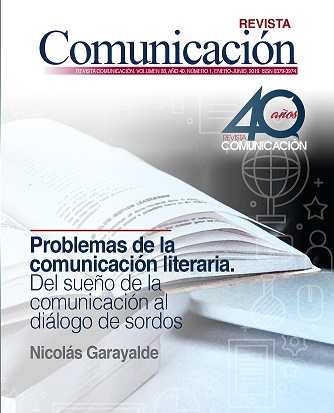Recursos semióticos en los anuncios publicitarios sobre discapacidad en la prensa escrita costarricense
Main Article Content
Abstract
This research shows the results of the multimodal analysis of 68 advertisements on disability published from 2014 to 2016 in the three newspapers of largest circulation in Costa Rica (La Nación, Diario Extra and La Teja). The advertisements were collected, catalogued and analyzed using the theory of multimodality by Kress and Van Leuwen (2001, 2002, 2006) to determine how semiotic modes question the construction of discourses on disability. The semiotic resources used in the ads are established to determine the characterization of people with disabilities. The study concludes that the advertisements create meaning through semiotic interrelation, that is, through multimodality, and the linguistic and paralinguistic resources that compose the advertisements must be valued for them to be fully understood. Furthermore, after the analysis, the study determines that the advertisements continue to promote a discriminatory discourse evidenced by the discrepancy between the iconic component of the advertisement and the linguistic one, since the former gives prominence to the PwD, but the
linguistic component shows that advertisers play a predominant role and PwD are relegated to secondary roles.
Article Details
This work is licensed under a Deed - Atribución/Reconocimiento-NoComercial-SinDerivados 4.0 Internacional - Creative Commons.
Política de acceso abierto
Esta revista provee acceso libre inmediato a su contenido bajo el principio de que hacer disponible gratuitamente investigación al público apoya a un mayor intercambio de conocimiento global.
Ser una revista de acceso abierto, implica que todo el contenido es de libre acceso y sin costo alguno para el usuario o usuaria, o institución. Las personas usuarias pueden leer, descargar, copiar, distribuir, imprimir y buscar los artículos en esta revista sin pedir permiso previo del editor o el autor con fines educativos y no de lucro.
La única limitación de la reproducción y la distribución, y el único papel de los derechos de autor en este ámbito, debe ser dar a los autores el control sobre la integridad de su trabajo y el derecho a ser debidamente reconocidos y citados. (Budapest Open Access Iniciative)
LICENCIAMIENTO Y PROTECCIÓN INTELECTUAL
Todos los artículos publicados, están protegidos con una licencia Creative Commons 4.0 (Deed - Atribución/Reconocimiento-NoComercial-SinDerivados 4.0 Internacional - Creative Commons) de Costa Rica. Consulte esta licencia en: https://creativecommons.org/licenses/by-nc-nd/4.0/deed.es
Las licencias constituyen un complemento al derecho de autor tradicional, en los siguientes términos:
- Se impide la obra derivada (es decir, no se puede alterar, transformar ni ampliar el documento).
b. Siempre debe reconocerse la autoría del documento referido.
c. Ningún documento publicado en la Revista Comunicación, puede tener fines comerciales de ninguna naturaleza.
Mediante estas licencias, la revista garantiza al autor que su obra está protegida legalmente, tanto bajo la legislación nacional como internacional. Por tal motivo, cuando sea demostrada la alteración, la modificación o el plagio parcial o total de una de las publicaciones de esta revista, la infracción será sometida a arbitraje internacional en tanto que se están violentando las normas de publicación de quienes participan en la Revista y la Revista misma. La institución afiliada a Creative Commons para la verificación en caso de daños y para la protección de dichos productos es el Instituto Tecnológico de Costa Rica, mediante la Editorial Tecnológica y la Vicerrectoría de Investigación.

